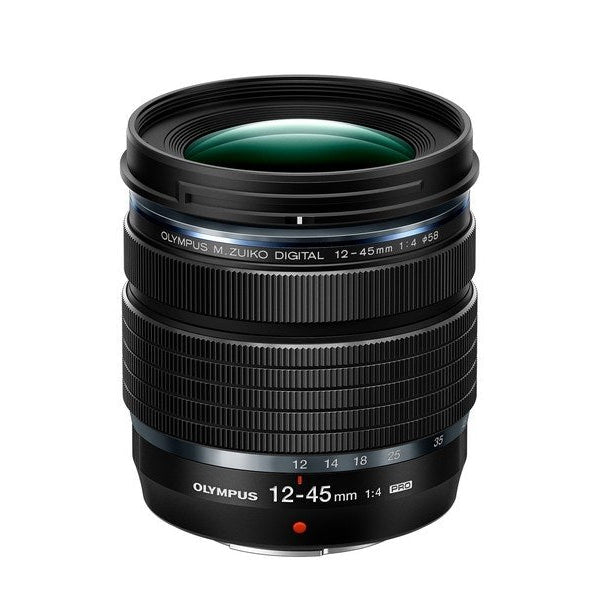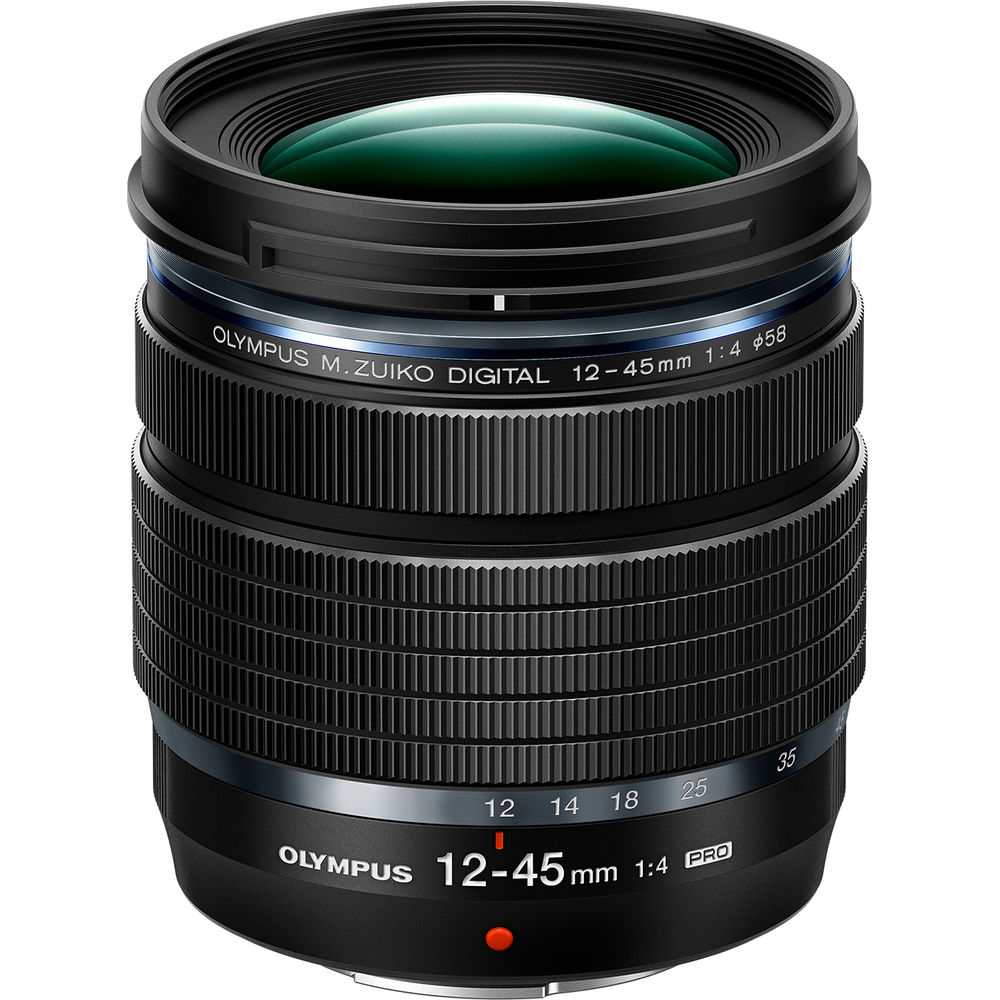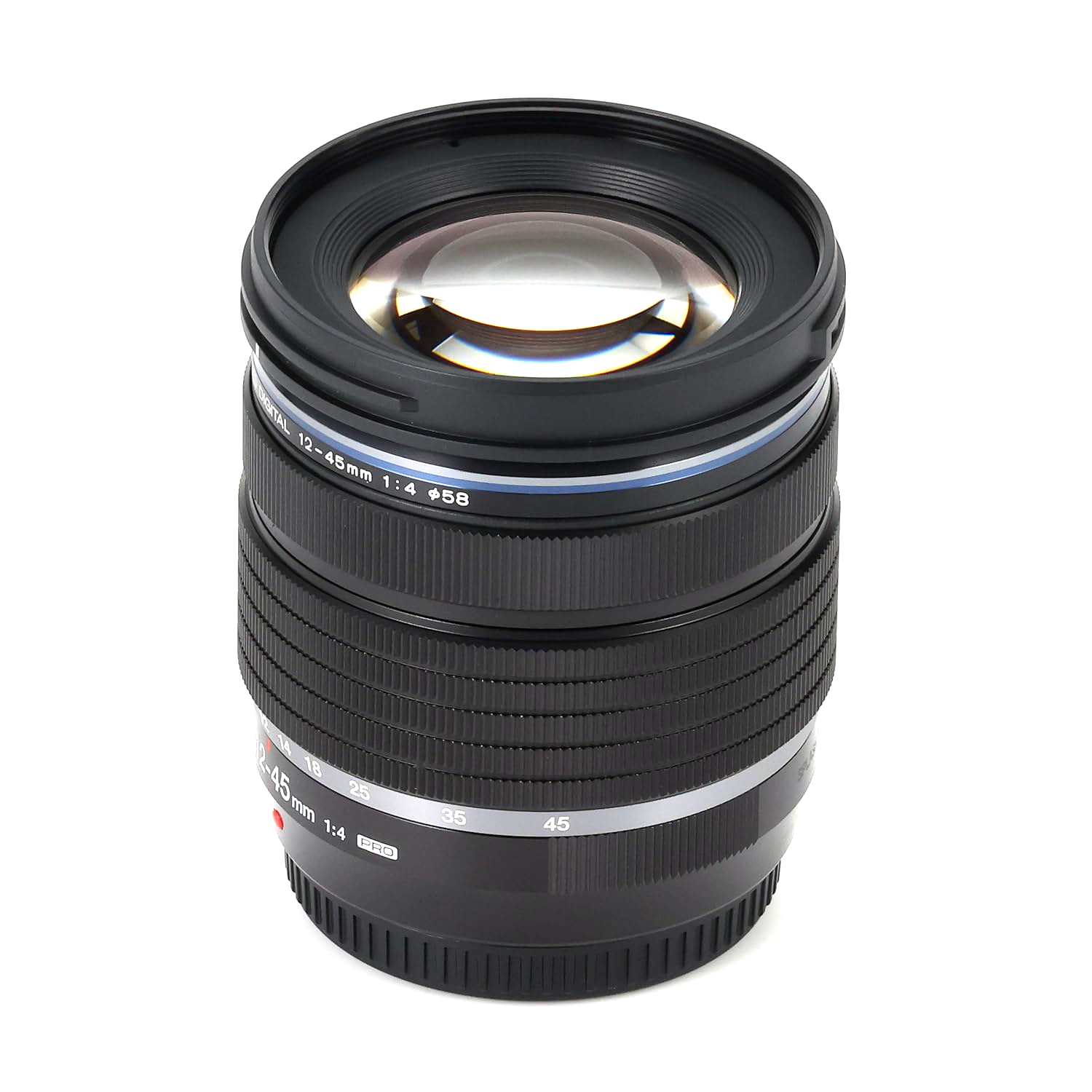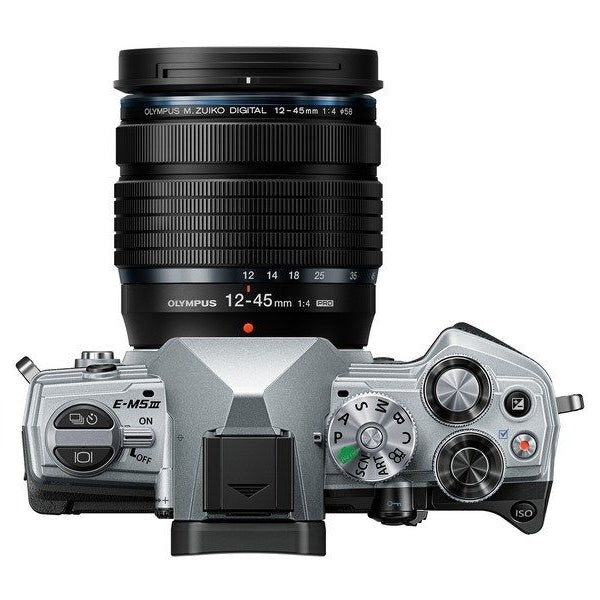What we think...
Product Description
OM SYSTEM / Olympus M.Zuiko Digital ED 12-45mm f/4 PRO Lens
Ultra-Compact and Lightweight Standard Zoom Lens for Professionals
The Olympus / OM SYSTEM M.Zuiko Digital ED 12-45mm f/4 PRO is a high-performance, compact, and lightweight standard zoom lens, designed to deliver exceptional image quality in a highly portable form. Featuring a constant f/4 aperture, weather-sealed construction, and superb macro capabilities, this lens is ideal for travel, street, landscape, and everyday photography.
With a 24-90mm full-frame equivalent focal length, it provides versatile wide-angle to short telephoto coverage, making it perfect for stills and video recording. The ZERO coating minimises flare and ghosting, while the Movie & Still Compatible (MSC) autofocus system ensures fast, silent, and accurate focusing.

Key Features
- 12-45mm focal length (24-90mm full-frame equivalent) – Ideal for travel, portraits, landscapes, and everyday shooting.
- Fixed f/4 aperture throughout the zoom range – Ensures consistent exposure for stills and video.
- Ultra-compact and lightweight – The world’s smallest and lightest lens in its class, enhancing portability.
- Splashproof, dustproof, and freezeproof construction – Sealed in 9 locations for reliable performance in harsh conditions.
- Advanced optical design – Aspherical lenses and ZERO (Zuiko Extra-low Reflection Optical) coating minimise aberrations, flare, and ghosting.
- Superb macro capabilities – 0.25x maximum magnification (0.5x full-frame equivalent) and a minimum focusing distance of just 12cm for stunning close-ups.
- Movie & Still Compatible (MSC) autofocus system – Provides silent, smooth, and high-speed focusing, perfect for video and fast-action shooting.
- Lens hood included – Enhances contrast and protects the front element from stray light.

Exceptional Optical Performance
The M.Zuiko Digital ED 12-45mm f/4 PRO is designed for sharp, high-resolution imaging with edge-to-edge clarity. Key optical features include:
- Aspherical and low-dispersion elements to reduce chromatic aberrations and distortion.
- ZERO coating to minimise flare and ghosting for enhanced contrast and colour accuracy.
- Optimised optical design to maintain high sharpness and brightness throughout the zoom range.

Perfect for Macro Photography
- 0.25x maximum magnification (0.5x full-frame equivalent) allows for detailed close-ups of small subjects.
- 12cm minimum focusing distance at wide-angle and 23cm at telephoto for versatile macro perspectives.
- Compatible with in-camera Focus Stacking to create sharp, deep-focus macro images.

Why Choose the Olympus / OM SYSTEM 12-45mm f/4 PRO?
- Lightweight and portable for travel and everyday use.
- Fixed f/4 aperture ensures consistent brightness and exposure control.
- Professional-level weather sealing for durability in challenging conditions.
- Versatile zoom range covers wide-angle to short telephoto needs.
- Excellent close-up capabilities with high magnification and focus stacking support.
The Olympus / OM SYSTEM M.Zuiko Digital ED 12-45mm f/4 PRO is the ultimate compact zoom lens for photographers who demand professional performance without the bulk. Whether capturing stunning landscapes, detailed macros, or smooth cinematic videos, this lens delivers exceptional image quality in a rugged, travel-friendly design.
Payment & Security
Your payment information is processed securely. We do not store credit card details nor have access to your credit card information.






















